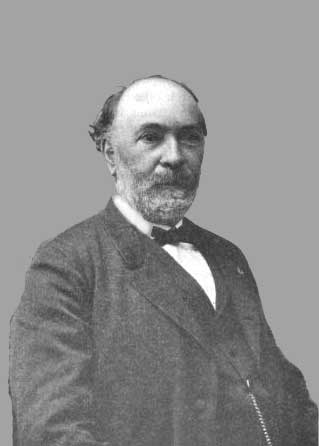.
Louis-Paul Cailletet

Louis-Paul Cailletet (September 21, 1832 – January 5, 1913) was a French physicist and inventor.
Cailletet was born in Châtillon-sur-Seine, France. Educated in Paris, Cailletet returned to Chatillon to manage his father's ironworks. In an effort to determine the cause of accidents that occurred while tempering incompletely forged iron, Cailletet found that heating the iron put it in a highly unstable state, with gases dissolved in it. He then analyzed the gases from blast furnaces, which helped him understand the role of heat in the changes of states (phases) of metals. This brought him to the work of liquefying the various gases.
Cailletet succeeded in producing droplets of liquid oxygen in 1877 but by a different method from that used by Raoul Pictet. He used the Joule-Thomson effect. The oxygen was compressed while being cooled. The compressed gas was then allowed to expand rapidly, cooling it even more. The result was the production of small droplets of liquid oxygen.[1]
Among his other achievements, Cailletet installed a 300-m/985-ft high manometer on the Eiffel Tower; conducted an investigation of air resistance on falling bodies; made a study of a liquid-oxygen breathing apparatus for high-altitude ascents; and developed numerous devices, including automatic cameras, an altimeter, and air-sample collectors for sounding-balloon studies of the upper atmosphere.
References
1. ^ For biographical and scientific details, see Sloan, T. O'Connor (1920). Liquid Air and the Liquefaction of Gases. New York: Norman W. Henley.
Retrieved from "http://en.wikipedia.org/"
All text is available under the terms of the GNU Free Documentation License

